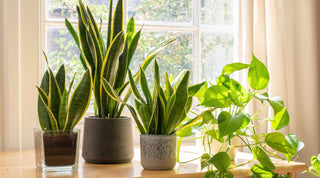By transforming your garden into a wildlife haven for birds, bees, butterflies, and other creatures, you not only enhance the beauty of your space but also contribute to the conservation of wildlife.
Creating a garden that appeals to wildlife is a joy for any nature lover and plays a crucial role in preserving local ecosystems. This post will explore effective, eco-friendly ways to make your garden a thriving haven for various species.

Plant Native Species
The cornerstone of a wildlife-friendly garden is the inclusion of native plants. These plants have evolved alongside local wildlife and are well-suited to meet the needs of native species. By planting native flowers, shrubs, and trees, you provide essential food sources and habitats. For example, milkweed is vital for monarch butterflies, while native berry-producing shrubs like holly or elderberry attract birds.
Create Layers of Vegetation
Wildlife thrives in a layered landscape that mimics natural habitats. Incorporate a mix of trees, shrubs, and ground covers to create a varied structure. This diversity in height and density offers shelter and nesting sites for different species. Tall trees provide a safe haven for birds, while lower shrubs and grasses can be perfect for ground-nesting bees.
Water Features
Water is a crucial element for wildlife. Adding a pond, birdbath, or even a simple water dish can significantly increase the attractiveness of your garden to wildlife. Ensure that any water feature has shallow areas for smaller creatures and consider adding a small fountain or dripper to keep the water fresh and appealing.
Avoid Chemicals
Pesticides and herbicides can be harmful to wildlife. Adopt organic gardening practices to ensure that your garden is a safe haven for creatures. Use natural pest control methods and embrace some level of insect activity as a sign of a healthy ecosystem.
Provide Shelter and Nesting Sites
To offer safe nesting and resting sites, consider installing birdhouses, bat boxes, and insect hotels. The design and placement of these shelters are important; for example, birdhouses should be placed at different heights and locations depending on the species you wish to attract.
Offer Food Sources
While native plants will provide much of the necessary nutrition, supplemental feeding can attract a wider range of species. Use bird feeders, and offer seeds, suet, and nectar. Remember, different species have different dietary needs, so providing a variety of food types is key.
Leave Some Wild Spaces
Resist the urge to tidy up every corner of your garden. Piles of leaves, logs, and brush can provide crucial habitats for small mammals, insects, and amphibians. These ‘wild’ areas can be integral to the life cycle of many creatures.
Encourage Pollinators
Pollinators like bees and butterflies are essential for a healthy ecosystem. Plant various flowering plants that bloom at different times of the year to provide a consistent food source. Also, consider plants with different shapes and colors to attract a wide range of pollinators.
Conclusion
Turning your garden into a wildlife haven doesn’t require a complete overhaul; small, thoughtful changes can make a significant difference. By adopting these practices, you not only create a more vibrant and interesting garden but also contribute to local wildlife conservation. Enjoy the beauty and satisfaction that comes from watching your garden teem with life, knowing you are positively impacting the environment.



